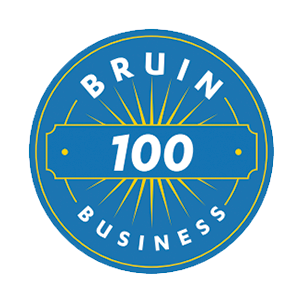INNOVATION FINANCE – STARTING WITH A CLEAN SLATE

April 19,2018 – In early March, long-time equipment leasing professional Bill Verhelle announced the formation of a new financial services company – Innovation Finance USA, headquartered in Fairport, N.Y.
Verhelle’s experience in the equipment finance industry is vast – and he is widely recognized as an innovator among industry leaders. For many, it’s no surprise that after leaving First American Equipment Finance in 2015 (the company he co-founded in 1994) Verhelle would resurface with a new equipment finance company and a unique model focused on large, creditworthy corporate and non-profit borrowers located throughout the U.S.
An advocate of innovation and breaking existing paradigms, Verhelle believes traditional methodologies to deliver equipment financing to commercial borrowers can be greatly improved via the utilization of new business models and emerging technologies. Verhelle noted in a statement announcing the launch of his company: “Business executives want self-service and transparent financing solutions for their growing companies.”
This is exactly what he says he and his team intend to deliver.
Equipment Finance Advisor recently caught up with Verhelle for a first look at the strategy behind the move to launch this new and innovative equipment finance company.
Equipment Finance Advisor: Bill, thank you for your time. According to the press release announcing the launch, Innovation Finance represents a new kind of commercial lending business, built for speed, simplicity, and transparency. Please describe the business model you are building.
Bill Verhelle: Many industries are experiencing massive transformation as new technologies and changing customer preferences make new business models possible. You might remember our last business, where we committed ourselves to providing a better client experience through the use of technology. That model provided First American with meaningful marketplace differentiation, which I believe still contributes to the company’s success today. At First American, we didn’t reinvent the wheel, we simply automated a long-standing, 100-plus-year-old business model.
 With Innovation Finance, we have an opportunity to start fresh with a clean slate. We have the ability to think about and create an entirely new technology platform and a new business model. We are developing technology that we believe will provide larger, highly creditworthy borrowers with far greater processing speed, control, and transparency. We believe mobile technology will also be increasingly important, even for business-to-business (B2B) financial services businesses. This is really the core of the differentiation we are building here – we have undertaken technology development initiatives to build new tools for customers that don’t exist anywhere in the marketplace.
With Innovation Finance, we have an opportunity to start fresh with a clean slate. We have the ability to think about and create an entirely new technology platform and a new business model. We are developing technology that we believe will provide larger, highly creditworthy borrowers with far greater processing speed, control, and transparency. We believe mobile technology will also be increasingly important, even for business-to-business (B2B) financial services businesses. This is really the core of the differentiation we are building here – we have undertaken technology development initiatives to build new tools for customers that don’t exist anywhere in the marketplace.
Equipment Finance Advisor: As you mentioned, Innovation Finance is targeting large, creditworthy borrowers. Traditionally, this has been a “high touch” segment of the equipment finance industry. How would you describe the “touch points” you envision between Innovation Finance and its clients?
Verhelle: This is an interesting question and something I’ve spent a lot of time thinking about over many years. When my former business partner and I founded First American nearly two decades ago, we were told that larger, more sophisticated customers operating in the middle market prefer face-to-face interactions. We were repeatedly told that customers would not support the new telephone-based model we were developing.
What exactly is a high-touch business model? In most cases when I ask that question, it’s defined as a business model in which a salesperson personally negotiates pricing, often in face-to-face meetings. The justification for this process is often related to product complexity or the perceived need for product customization.
We agree that large creditworthy borrowers prefer “exceptional service.” But today, “exceptional service” is no longer characterized as experiencing face-to-face sales negotiations. And fewer large corporate customers believe “exceptional service” involves lunches, dinners or other forms of traditional corporate entertainment. Consumer buying experiences are causing business executives to inquire regarding the ability to compare, initiate and control business transactions independently, with the capability of seeking support (when needed) through chat, telephone or video chat features, often available 24/7 and 365 days a year.
Sometimes we all stick with ideas that worked in the past for too long, not recognizing that customer preferences or the marketplace have changed. We all must be careful not to defend our existing models simply because “we’ve always done it that way” … or because “it would be terribly difficult to change the way we do it.” Today, new marketplace opportunities appear to be available to those proposing new ideas.
By the way, I believe it’s nearly impossible for any company to change its business model.
Equipment Finance Advisor: Please explain what you mean by that last comment!
Verhelle: It’s extremely difficult to change a firm’s business model. This explains why Amazon dominates Walmart; and there are a variety of other similar examples, across many industries. The leader of Deloitte’s Center for the Edge think tank, John Hagel, recently suggested that the only way large businesses can possibly adopt new business models is to create new businesses and eventually merge the old business into the new business.¹ Transforming the old business simply won’t work, claims Hagel. And this opinion is from a consultant who works primarily with very large companies trying to transform themselves. I think this interesting observation is exemplified in the disruption in the retail industry, in advertising, and soon to occur elsewhere. These examples demonstrate the extreme difficulty companies face in changing their business models to fit a new strategy (often made possible by new technology). The new technology is not the problem (or the solution) it’s really all about changing the existing business model, which is very difficult to accomplish.

There seems to be a lot of innovation going on in the B-to-C market – with people trying to find more efficient ways to process consumer applications. There’s also a lot of innovation going on in the small-ticket Fintech B2B space. But we haven’t seen a lot of innovation in the middle market or with larger, creditworthy customers. This is an interesting opportunity since it’s the market segment with which we are most familiar. Large, creditworthy borrowers have not seen much innovation in how they are served. We will focus on this market segment.
Equipment Finance Advisor: What experiences do you wish to create for your clients and how will these experiences differ from the more traditional lending approaches utilized by equipment finance companies working with larger companies?
Verhelle: We are in the midst of our development efforts, and we have hundreds (possibly thousands) of decisions yet to make. The guiding principles behind those decisions include the following questions:
- How do we put the customer (borrower) more in control of the entire financing/leasing process?
- How do we dramatically increase transparency?
- How do we diminish or eliminate the adversarial nature of the existing negotiation process between customers and their lenders?
- How do we speed up the delivery process and bring meaningful improvement to the client experience?
- How do we simplify and facilitate repeat business for customers?
Equipment Finance Advisor: You have spoken on numerous occasions about the need to embrace technology and how technology is transforming the equipment finance industry. Please explain where you believe technology is currently having the most significant impact (sales, operations, credit, funding), and where you feel the impact of technology will be most prevalent in the future.
Verhelle: Most of our competitors tend to think about technology in terms of their existing business strategy (usually, cost leadership). This is logical because until very recently, this is pretty much the way all business leaders thought about technology. How can we automate part of our process and remove some labor costs? This framework focuses heavily on the credit, operations and funding side of the business, but it can also impact sales with CRM implementations.
We are trying to think about technology in terms of enabling a new and better (and different) business model. We obviously believe the “business model redesign” approach could have a greater long-term impact. Cost-saving initiatives typically preserve the existing strategy (sometimes making it even less flexible or adaptable). By contrast, we are contemplating technologies that can foster an entirely new model. As such they tend to cut across all four areas, with a primary focus on the functions that impact the customer’s buying experience.
Equipment Finance Advisor: In the past, you have also written and spoke about how younger employees are often the drivers of innovation in leading, innovative companies. Please describe the type of team you will build in your new company. Will employing younger employees be a significant part of your staffing strategy? Is cross-functional training a part of this team-building strategy?
Verhelle: Absolutely. Hiring smart and technology savvy employees are critically important to our business strategy. Digital natives, as they are sometimes called, have the tech-skills combined with the outsider perspective to help firms develop new products and services. We believe these young professionals are most effective when organized in small, cross-functional teams, and when they are given the authority to run some experiments and to make mistakes. We intend to hire the best and the brightest talent and to provide an environment that will allow them to make big contributions to our firm’s long-term success.
We’ve also learned from our prior experiences that organizational design matters and a flat team-based structure is tremendously important. In a flat organization, it’s much easier to run experiments and learn from customers in the marketplace. If the folks implementing strategy decisions are removed from competitors and customers, sitting high up within a hierarchy, it’s nearly impossible to make the needed changes.
Equipment Finance Advisor: Where do you see the equipment finance industry over the next five years? Without a focus on technology and innovation, will some equipment finance companies fail to survive?
Verhelle: We believe it is highly likely that loan officers will not be driving paperwork to customers for signature in five years. Today, it still happens all the time.
I recently had the privilege of spending two days with a dozen CIOs of major equipment finance companies (large captives, banks, and a couple independents). I learned that only one-third of the companies represented in the group had adopted digital signature technology for equipment finance. And of the one third that adopted and rolled-out digital signature technology, no company employing digital signatures had reached 25 percent utilization. If this 12-company group is representative of the industry, only a small portion of equipment finance transactions are being consummated with digital signatures. This is a technology that has been widely available for many years and is widely used in adjacent industries and in consumer markets. This slow pace of business process change seems unlikely to continue into the coming decade.
Our objectives at Innovation Finance go well beyond digital signatures. We believe significant business transformation will come to the equipment finance industry during the next five years. Other big changes are also possible within the next five to ten years. The commercial equipment finance industry might evolve into two separate types of participants: suppliers of capital (banks) and firms that deliver the capital to business owners (directly or through vendors). There could also possibly be new entrants from the technology or retail arena, which could force rapid change on the entire equipment finance industry.
Equipment Finance Advisor: Finally Bill, please tell us a little about the team you are building.
Verhelle: I’ll start with Mark Tomaselli who is our President. Mark is a true thought leader and an outstanding executive. He is a bold strategist with a deep understanding of technology. Mark has relationships with many Bay Area companies. He has a powerful vision as to how we can combine the latest technologies into the most advanced platform. We are very fortunate to have Mark in this critical leadership role. Mike Ziegelmann is our Chief Financial Officer. Mike did a fabulous job in the past as the Chief Financial Officer, and later as the Chief Credit Officer of First American. I’m privileged to work with Mike again. Nate Gibbons is our Chief Operating Officer. Nate is a talented, articulate young professional with outstanding leadership skills. Initially, Nate will oversee our recruiting efforts and assist in building an outstanding team of young professionals. It’s my privilege to work with these professionals, who are all deeply committed to making a positive impact with their lives and their careers.
Source: http://www.equipmentfa.com/articles/7897/innovation-finance-usa-starting-with-a-clean-slate










